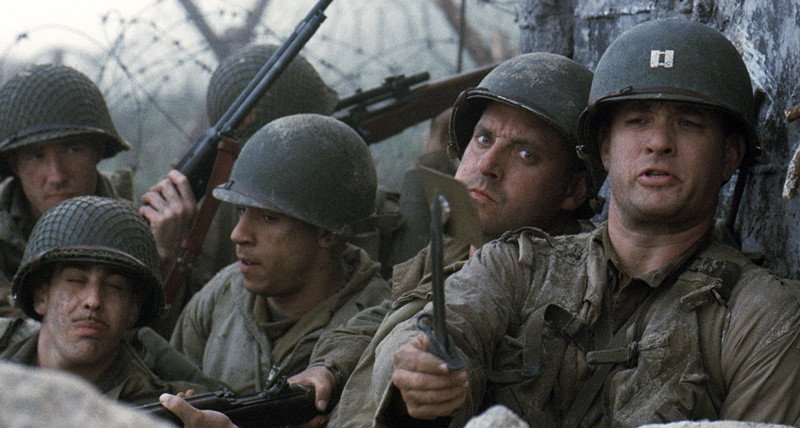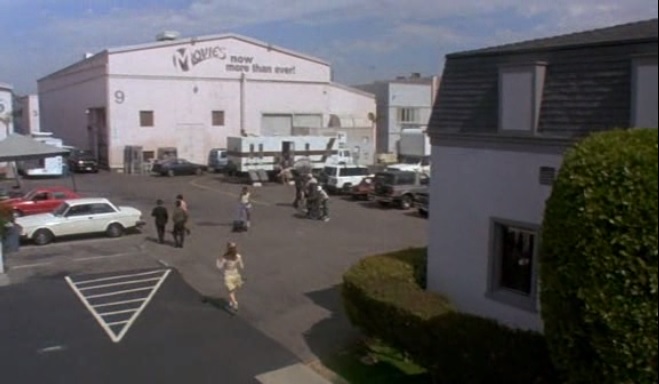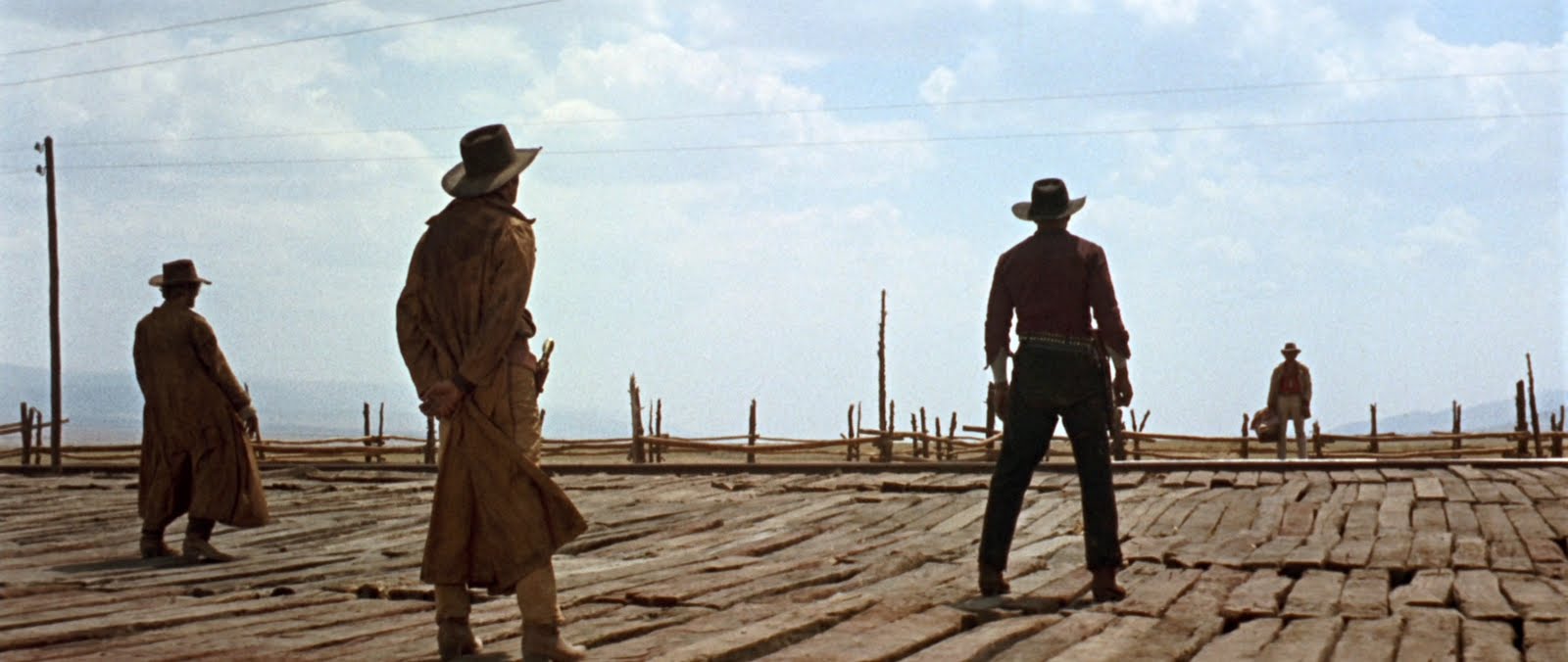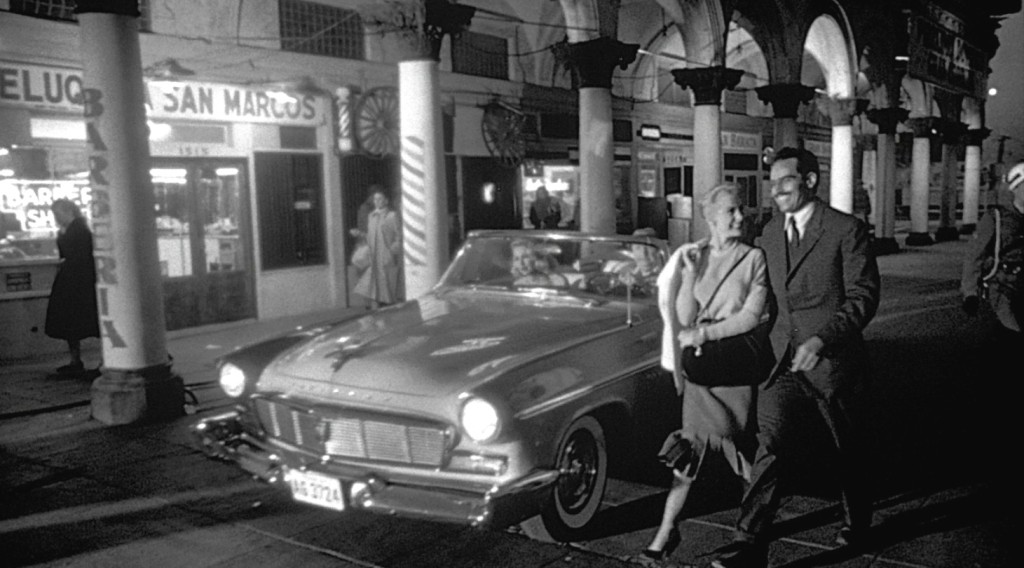5. Saving Private Ryan (1998)

This is easily the most devastating opening to a war film ever made. It is in fact so well-made that the rest of the film never quite lives up to its intensity. A horrific depiction of the D-Day landings, it is a masterclass in how to direct large swathes of action without ever losing sense of what is going on. It starts with the soldiers on the boat, about to hit Omaha Beach.
Some are throwing up. We are told their objective straight away — “Clear those murder holes” — giving the scene a clear antagonist to root against. Yet, the second the boats get anywhere close to where they need to go, half of the men already seem to be dead. Right from the off, the odds against these soldiers seem to be stacked against them. Its a miracle they ever make it across the beach at all.
The small touches are what make this opening scene so brilliant. Take for instance, the soldier being shot in the helmet. Surprised, he takes the helmet off. Other directors would end it there, but Spielberg has him shot in the head again. Little else has ever so quickly portrayed the utter absurdity of the battlefield. After such a brilliant opening, the remaining characters all seem like living ghosts: making their subsequent mission seem positively impossible.
4. Apocalypse Now (1979)

Apocalypse Now is a movie that is soaked through with a sense of grim fate. It is a classic hero journey, but one full of cynicism regarding the darker side of man. This is encapsulated by the ironic music that starts the film: “This is The End” by The Doors. The same music that plays at the end of the movie, it gives the whole thing an almost Calvinist aspect.
Seeming as Benjamin Willard (Martin Sheen) wanted a mission and “for my sins” they gave him one — this destruction of the tropical rainforest by Napalm can be seen as the original sin by which the rest of the characters must pay.
It is a sequence that is both beautiful and repulsive, made all the more eerie by its very abstraction. Helicopters float through the smoke and drop continuous bombs. The sound design stresses the sound of whirring rotors. This was in deep contrast to nearly every other war film of that era. Rarely has war looked so dirty. These rotors are then matched with the ceiling fan above Willard, suggesting a man who is doomed right from the beginning.
3. The Player (1992)

The meta-tracking shot to end all meta-tracking shots — replete with a security guard mentioning his favourite tracking shots, including, of course, Touch Of Evil — the opening to The Player perfectly sets the scene for this tale about the worst habits of modern Hollywood.
It is a film about a man working on films, and the eight minute opening shot is intentionally self-reflexive. By making it that long Robert Altman is both visually describing the world of Hollywood as well as purposefully making his film deviate from the era’s norm, which as a result of MTV was starting to favour shorter and shorter scene lengths.
Yet, also as a set-up to the film’s plot, the opening works wonders. We see the hierarchy of Hollywood: writers, executives, producers and assistants. Griffin Mill (Tim Robbins), a ruthless producer, is introduced, hearing pitches from desperate writers. He favours repetitive ideas over original visions.
In another nod to Touch Of Evil, the page boy is involved in a crash, before the camera tilts towards a postcard lying on the floor. Labelled with the ominous words “Your Hollywood is Dead,” it is a premonition for things to come; suggesting both that Hollywood has had enough of producers like Mill, and that things in the movie itself are going to take a darker edge.
2. Once Upon A Time In The West (1968)

From The Good, The Bad and The Ugly (famously parodied by Ratatouille) to Once Upon A Time In America, Sergio Leone has always had a knack for beginnings. But he never bettered the epic sequence which starts his masterpiece Once Upon A Time In The West, one that works as the ultimate compendium for every Western ever made.
Starting at a train stop in the middle of nowhere, the credits are overlaid as we are introduced to sweltering characters battling the heat and an annoying fly. Guns are cocked as a train arrives, billowing black smoke.
Without knowing what is going to happen, the atmosphere is already tight and suspenseful, stressed by Leone’s signature close-ups on people’s faces and eyes. No one is found on the train, initially, until we hear the motif that will characterise the rest of the film.
Charles Bronson, the undisputed king of the revenge film, has arrived, playing the harmonica. He exchanges catchphrases with the local gunmen, sent by a mysterious man named Frank, before dispatching with them all, despite catching a little flak himself. From the production to the sound design, every moment in this opening sequence is fraught with undefined tension. Thankfully for us, Leone never lets up throughout the entire film.
1. Touch of Evil (1957)

It is the last great film of the Golden Age of film noir, a tale of infinite intrigue taking place just across the Mexican border. In what may be the best sequence of Orson Welles’ entire filmography, the opening shot expertly sets the mood for the story to follow.
Taking place over an unbroken three minutes, the tracking shot, perfectly making use of a crane, starts with a close-up of a bomb being set. Our attention is immediately piqued. He then puts the bomb in the back of a car, just before a young couple get in. This ticking time bomb, one that Hitchcock would be proud of, is then ironically played against the rock-and-roll music of that era.
We know that the bomb is going to go off, the only question is when; the camera then panning away from the car and following the two protagonists of the film — played by Charlton Heston and Janet Leigh — as they criss-cross with the car multiple times on foot. Will our protagonists be caught in the action, we wonder, as they pass the border into Mexico? In a touch of delightful irony, the woman in the car even states that she can hear something ticking.
Then as our protagonists kiss, the car explodes. Only then does the scene cut to the burning car — setting off the events of the film. As both a sequence in itself, and as the driving force of the entire movie, this is easily regarded as the greatest opening of all time.
Author Bio: Redmond Bacon is a professional film writer and amateur musician from London. Currently based in Berlin (Brexit), most of his waking hours are spent around either watching, discussing, or thinking about movies. Sometimes he reads a book.